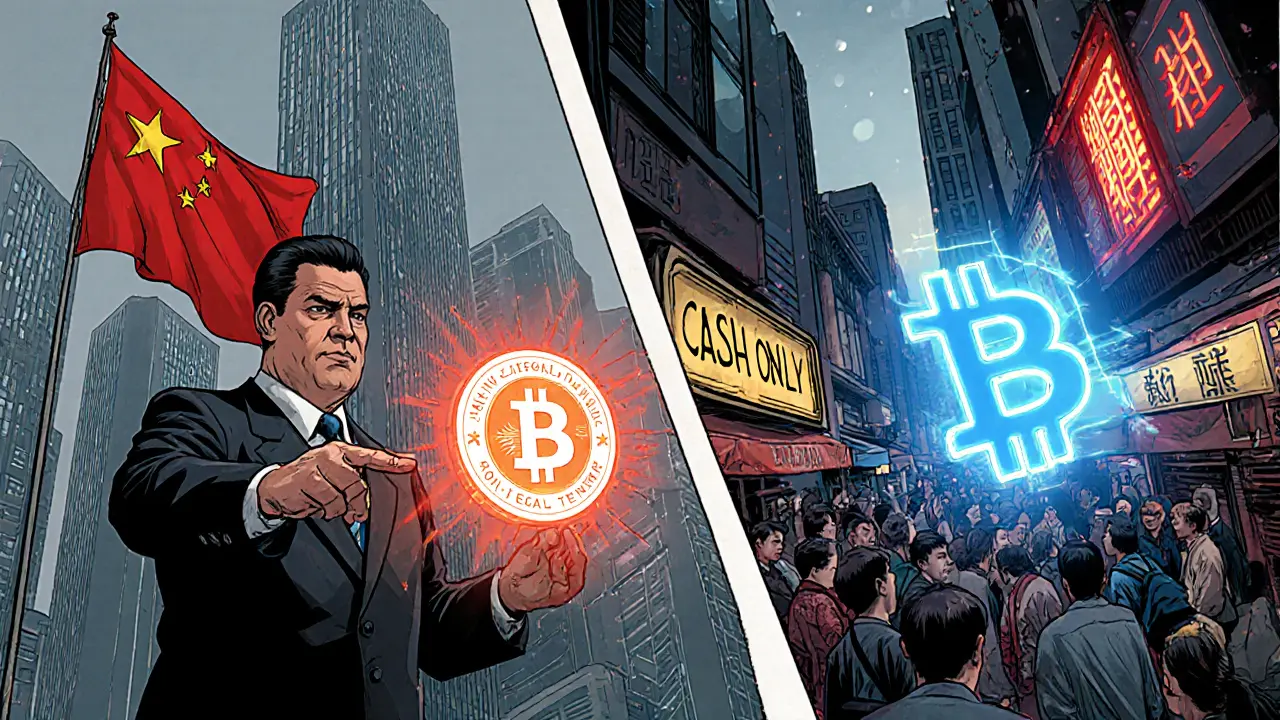PBOC Crypto Enforcement – What It Means for Crypto Users
When working with PBOC crypto enforcement, the crackdown led by China’s central bank to clamp down on cryptocurrency trading, mining, and related services. Also known as People's Bank of China crypto crackdown, it targets illegal exchanges, unlicensed wallets, and overseas platforms accessed via workarounds. The authority behind the push is People's Bank of China, the nation’s monetary regulator that issues financial policies and supervises payment systems, which enforces cryptocurrency regulation in China, a framework that forbids retail crypto trading and imposes heavy penalties on non‑compliant operators. To stay online, many users turn to VPN services, tools that mask IP addresses and encrypt traffic, hoping to bypass the firewall. These three entities—PBOC enforcement, the central bank, and VPN usage—form a tight loop of action, reaction, and adaptation.
How Enforcement Shapes Underground Activity
The crackdown doesn’t just shut down exchanges; it pushes traders into hidden corners of the internet. In places like the Myanmar underground crypto market, operators learn to route funds through peer‑to‑peer networks, exploiting weak enforcement and low‑cost cross‑border gateways. That creates a feedback loop: as PBOC enforcement tightens, underground markets expand, and vice‑versa. At the same time, crypto miners relocate to regions with lax oversight, swapping high‑energy Chinese farms for offshore data centers. This migration fuels a new ecosystem of compliance tools, software that scans transactions for AML flags and auto‑generates required reports for regulators. The chain of cause and effect shows that PBOC crypto enforcement influences underground crypto markets, while compliance tools enable entities to stay within the law.
For everyday users, the practical fallout appears in three clear ways. First, major exchanges delist Chinese users, forcing them onto smaller, less regulated platforms that often run airdrop scams or hidden fees. Second, the legal risk of using a VPN in China spikes; authorities can penalize individuals for circumventing the Great Firewall, turning a simple privacy tool into a liability. Third, even legitimate DeFi services become harder to access because transaction monitoring systems flag any cross‑border flow linked to Chinese IPs. In short, regulatory crackdown requires robust compliance solutions, whether you’re a trader, developer, or investor trying to stay afloat.
China’s aggressive stance ripples across Asia. Pakistan’s 2025 shift from a total ban to a regulated market, for example, shows how neighboring countries can swing from prohibition to permission, creating arbitrage opportunities for those who can navigate both environments. Meanwhile, the Hong Kong SAR maintains a more open stance, attracting projects that need a gateway to Chinese capital without the direct firestorm of PBOC rules. This regional dance illustrates that crypto regulation in China shapes market dynamics throughout the continent, influencing where liquidity flows and which tokens gain traction.
Below you’ll find a curated collection of articles that break down each piece of this puzzle. From deep dives into VPN legal risks to case studies of underground markets and step‑by‑step guides on staying compliant, the posts give you actionable insight tailored to the realities of PBOC crypto enforcement. Ready to explore the details? Let’s jump into the resources that will help you navigate the crackdown, protect your assets, and spot real opportunities amid the turmoil.

China's Crypto Crackdown: Seizures, Bans and the Push for the Digital Yuan
An in‑depth look at China's sweeping crypto ban, from early warnings in 2009 to the 2025 full prohibition, covering seizures, enforcement tools, global market impact, and the push for the digital yuan.
December 3 2024